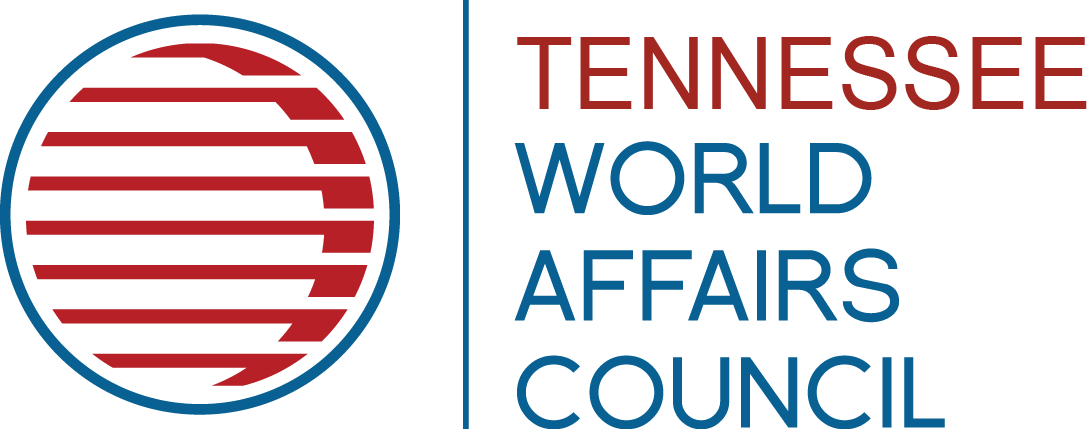
COVID-19 Global Town Hall Keynote Remarks: Dr. Ezekiel Emanuel, MD, Ph.D.
Dr. Ezekiel Emanuel is Vice Provost for Global Initiatives and chair of the Department of Medical Ethics and Health Policy at the University of Pennsylvania. He served as special advisor for health policy to the director of the White House Office of Management and Budget in the Obama Administration. Dr. Emanuel launched our COVID-19 two-night special program with a masterful scene-setter describing the progress of the pandemic and the road to a vaccine.
Special Members’ Only Content
Transcript courtesy of
The Tennessee World Affairs Council
TNWAC.org
September 2, 2020
COVID-19 COMPLEXITIES: A GLOBAL TOWN HALL
The World Affairs Councils of Kansas City, Denver, Colorado Springs, Western Massachusetts, Harrisburg and Tennessee have joined together to organize “COVID Complexities: A Global Town Hall,” an international virtual event presented September 2nd and 3rd, 2020.
Keynote Remarks
Dr. Ezekiel Emanuel, MD, Ph.D.
[Matthew Hughes] It is now my great pleasure to welcome our keynote presenter for this global town hall to help us understand pandemics past, present, and future. Dr. Ezekiel Emanuel is Vice Provost for Global Initiatives and Chair of the Department of Medical Ethics and Health Policy at the University of Pennsylvania. From January 2009 to January 2011 he served as Special Advisor for Health Policy to the Director of the White House Office of Management and Budget. Dr. Emanuel received his MD from Harvard Medical School and his Ph.D. in Political Philosophy from Harvard University. He has written and edited nine books and over 200 scientific articles and is current a columnist for “The New York Times.”
Doctor Emanuel, thank you so much for joining us. The floor is yours.
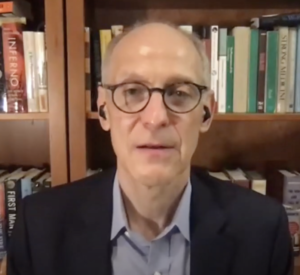 [Dr. Ezekiel Emanuel] Thank you very much for having me. This is a very important topic.
[Dr. Ezekiel Emanuel] Thank you very much for having me. This is a very important topic.
Let me begin in a place that many of you may not think is relevant. The 1960s and 70s. It was at that time that we had an explosion of antibiotics and vaccines and many, many people in the established medical community thought infectious diseases were a thing of the past.
We had prevention through vaccines. We had treatment. We just didn’t have to worry about them. And only foolish people would go into infectious diseases.
Thankfully there were enough foolish doctors to continue. Because it wasn’t too long thereafter that the world was confronted with HIV. Initially we didn’t know it was an infectious disease but it became pretty clear in the mid-1980s that we were confronted with an infection disease.
Since the turn of the century we’ve had a number of infectious diseases that have spread around quite rapidly. We had SARS as you know, in 2003 and 2004. We had H1N1 in 2009 and 2010. And I happened to be in the White House participating in managing that for the White House. We had two episodes of Ebola in West Africa and in the Congo. We had MERS, the Middle East Respiratory Syndrome virus, another coronavirus. We had Zika. We’ve had plenty of infectious diseases.
We’ve also had outbreaks of Measles in this country as well as Meningococcus, mainly due to lack of vaccinations.
It’s not the case that infectious diseases are has-been, it’s the case that we have serious infectious diseases and as we’re learning from this COVID, serious threats of pandemics.
I began intersecting in the topic of pandemic preparedness and how to think about it in 2005 when the then Secretary of Health and Human Services commissioned work on how to plan for an influenza pandemic because he saw the threat of SARS and thought that the United States was under prepared.
I got involved because they created a priority ranking system for who in this country ought to receive a vaccine in the case of a pandemic. And I though their priority ranking system was wrong. But it led me to think deeply about pandemics and preparation. Since 2005 and that initial report by HHS there have been a number of updates in 2008, 2017.
Many in the government recognized the threat potential of pandemics and yet we took very little action. Why did we take very little action. Well the answer is pretty clear if you think about human psychology.
Yes, the magnitude of the harm as we’re learning is quite large, but the likelihood of the event occurring quite small.
The last pandemic we had was in 1968. The last fly pandemic we had was in 1968. Worldwide roughly a million people died. It wasn’t “that bad.” [shrugs]
And in the 20th century we had three flu pandemics. 1918 which was horrendous. 1957 which was slightly worse than 1968. And I think people became complacent thinking we had vaccines, we could get on top of this.
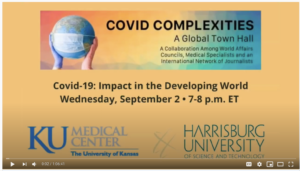
You saw that in this Administration because while they were warned about the importance of preparing for a pandemic. And mostly people were focused on flu. They hired a person to address pandemic threats on the National Security Council, Admiral Ziemer. I actually urged them to hire Admiral Ziemer. I spoke with the President himself about it and they did hire. But then they quickly ended up firing him and did no preparation.
Let’s face it. Our response to this pandemic has been abysmal. There’s no country in the world that has some special treatment, or special way of detecting COVID. We’re all countries in the same boat. And yet, many countries: Taiwan, South Korea, Japan have done much better than the United States has. We have had a singularly terrible response.
Why? I would say there are three reasons.
The first and most important is, poor leadership. We have a leader who changes his message, has not gotten on message and is incapable of management and addressing problems. He was told to lockdown the country at the end of February at the latest, and again in March. He was told to create a number of working groups to address testing, PPE, ventilators, vaccines, therapeutics. He didn’t do that.
It was just an abysmal result.
And simultaneously he undercut Federal agencies.
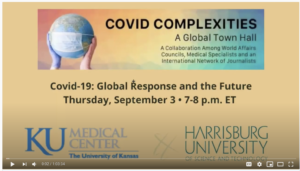
Second, partially because of that leadership gap, there have been inconsistent messages. One of the things the CDC has often said is that you need a consistent message and you need to repeat it often. And even the CDC did not follow its own advance. We have not had a consistent message. And it’s therefore hard for the average person who doesn’t pay attention that deeply to know what to do.
And the third problem is, we have never taken the time we have to actually address and put in place the testing, tracing and isolation regime we would need to get our arms around this. It’s not that difficult.
We would need about eight to ten weeks of lockdown, and I believe the American public has the fortitude for that, to bring the rate of new cases down. It would have to be national as we have learned. We would then have to ease up having people wear a mask, keep distance, have hand hygiene.
So, I think that is possible.
Where do we go from here?
Well, clearly this Administration and much of the world is betting on a vaccine. And having a vaccine that can address the problem. We are having – there are probably 200 vaccines in development. We have now more than 20 in human, more than 30 in human trials. We have a number in phase III trials looking for efficacy.
Proving a vaccine is effective is only part of the challenge. There are additional challenges. Inside the United States there’s the challenge of producing enough and multiple steps toward packaging it, sending it out and actually administering it.
Just to give you a flavor for those challenges.
We need special glass vials. Not the glass that you’re used to or drink out of. But special glass that moderates the temperature. There are only a handful of companies, one in the United States, Corning, and a couple in Europe that actually make that glass. We need stoppers and we need hundreds of millions if not billions of these. Then we may need a cold chain. We will then also need to fill these vials. That’s called fill-finish. Put the vaccine in there and stop them. That is done in factories that are 100 times more sterile than surgical operating rooms in hospitals. You cannot just flip your fingers and put them up.
The world has been running pretty low on excess capacity on fill-finish factories. We run it 85-90%. The whole world of fill-finish is for all vaccines. If we take some of that off-line to put to, to redirect it to COVID there will be other vaccines that won’t be done. We need new fill-finish lines and new fill-finish factories. The government needs to do that and yet we have only done a little bit of that in terms of getting new lines up and running.
Once you have fill-finish you actually need syringes and needles. Again, hundreds of millions if not billion, just for the United States. Because we’re most likely going to have to give two shots, at least, of the initial vaccines. There aren’t that many companies that actually produce syrines and needles in that kind of quantity. BD is the main one. It’s only recently that the government has actually let out a contract with them to install another line to produce enough syringes. And then it has to get to communities and be administered.
On a good year we administer 109-110 million influenza vaccines. That won’t be enough to get herd immunity to COVID. We would need to administer over 230-250 million people. In addition, we would probably have to vaccinate them twice, because all of the vaccines that we’re looking at are, at the moment, require two vaccinations. That adds complexity. If requires figuring out who gets it and then being sure that they get the second one, four weeks later.
There will be a huge loss unless we have good technology and good ability to track down people and make sure they get that second dose.
We’re not going to have enough vaccine in the United States. There’s now a National Academy panel that is looking into how we prioritize people in the United States to get a vaccine. They have just released their report for public comment.
One of the things that is interesting in that report and I recommend it to you, if you’re at all interested in how we’re going to distribute the vaccine, is that in Tier 1 at the top, are health care workers, first line responders. Tier 1B includes people who are at significant risk because of their co-morbidities, their other health conditions and diseases. It turns out, in the United States that group is 193 million people. Two thirds of the population is at high, significantly high risk. Those are people with obesity, and diabetes, and emphysema, and cardiac disease, and cancer. We’re going to need rationing inside rationing. And you who are listening to this, and who might otherwise be healthy and not over 65, you’ll be down the list in getting a vaccine. And how that happens, and its ethics is open to question.
I want to conclude by saying a word or two about what’s evolving regarding distributing vaccine among countries. After all you’re a Council that is interested in world affairs and therefore the distribution of vaccine not within the United States but among countries is of great interest to you.
You may have seen yesterday’s (Sep 1) announcement by the President that we are not joining this Covax facility. The Covax facility is a mechanism set up by the WHO, GAVI which is an organization which distributes vaccines to low and middle-income countries and CEPI which is an organization for emergency preparedness for pandemics. They have set up this organization called COVAX to buy vaccines and distribute to countries. They are committed to distributing it fairly and equitable.
That’s not the only group that’s committed to distributing vaccine fairly and equitably. Actually vaccine manufacturers. Astra Zeneca has publicly said that they want to have a broad and equitable distribution. A couple of days ago the CEO of Lily said that there needs to be broad and equitable distribution of a vaccine to other countries and we shouldn’t just keep a vaccine for the United States.
In addition, leaders of many countries have suggested that we need a fair and equitable distribution of a vaccine. Justin Trudeau led seven Prime Ministers of countries in writing an Op-ed in the “Washington Post” about the need for a fair and equitable distribution, and a commitment by these countries to a fair and equitable distribution. The only problem is almost no one defines what a fair and equitable distribution of a vaccine looks like in this pandemic.
How do you distribute a vaccine?
Well, tomorrow at 2pm (Sep 3) “Science” is going to release an article that I have authored along with 17 other co-authors, mainly public health people, ethicists and political experts, trying to define what a fair and equitable distribution is.
We argue, and I think this applies not just to COVID, but any situation where we have a scarce resource that needs to be distributed. We argued that there are three important values that ought to guide a fair and equitable distribution.
Limiting harm, rectifying disadvantaged groups, and equal concern and respect – mainly non-discrimination against groups and people because of their race, religion or their sex. Those three principles leads you to distribute the vaccine where it will do the most to reduce the number of premature deaths.
Right now if we had – call it a hundred million doses of vaccine – sending some of them to New Zealand, not have a big effect in reducing deaths. Because New Zealand has actually done a very good job in terms of public health. But sending them to Peru, or Brazil, or Panama, or the United States would make a difference.
So, we should rank countries by how much vaccines will reduce premature deaths and distribute the vaccine that way. Once we reduce premature deaths, we would then need to distribute the vaccine based upon rectifying and ameliorating economic and social deprivations. Reducing the number of cases of poverty. Opening schools around the world. Those are the goals.
And then the third phase is returning back to normal, getting countries to herd immunity. We think that’s what a fair and equitable distribution means. It doesn’t mean giving all countries a flat amount, say 3% of their population. It doesn’t mean giving countries on the basis of the number of health care workers they have or the number of elderly they have. If you think about it, an Emergency Room doctor would not say, “Alright, everyone in the Emergency Room, I’m giving each of you five minutes to address your problem.” He would say, “Alright, who has the most serious problem. That person with the heart attack, we’re going to do that. And you who have a sore throat and worried about strep throat, you’re going to have to wait.
That’s what we should do when it comes to distributing a vaccine in the world. Where can it do the most good. And distributing it by health care workers and people over 65, that means a lot more vaccine will go to developed countries that have more health care workers per population, have more people over 65 compared to developing countries. We all know that due to deprivation and disadvantage have few health care workers per population and a life expectancy which means that they don’t have that many people over the age of 65.
So, taking that principle as a way of distributing vaccine among countries would actually prejudice among the poorest countries in the world.
We are facing new times. Hopefully our response will get better. But once we get a vaccine there will be big challenges on how to distribute it among countries and how to distribute it within the United States.
All I can hope is that our leadership is capable of stepping up to that challenge because the world will be better and American prestige and soft power will be greater if we take appropriate leadership in the fair and equitable distribution of a vaccine against COVID.
Thank you very much.
[Matthew Hughes] Dr. Emanuel, thank you so much for your insightful remarks and for helping us gain a sense of just how complex the COVID pandemic is, both now and going forward, and we’ll certainly value your remarks as we dive deeper into this conversation.
[Dr. Ezekiel Emanuel] Thank you. Good luck with a great conversation and a great program.
* * *
Transcript courtesy of the
Tennessee World Affairs Council
TNWAC.org
Video of Dr. Emanuel’s keynote and the full panels are archived at YouTube.com/TNWAC
THANKS TO OUR PARTNERS IN GLOBAL AFFAIRS AWARENESS AND EDUCATION OUTREACH

THANKS TO OUR PARTNERS IN GLOBAL AFFAIRS AWARENESS AND EDUCATION OUTREACH
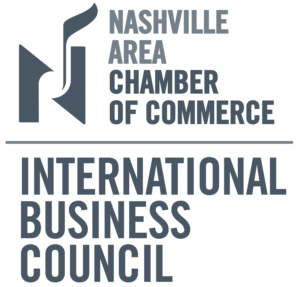
THE MISSION of the nonprofit, nonpartisan Tennessee World Affairs Council is to promote international awareness, understanding and connections to enhance the region’s global stature and to prepare Tennesseans to thrive in our increasingly complex and connected world.
THE VISION of the Tennessee World Affairs Council is a well-informed community that thinks critically about the world and the impact of global events.

